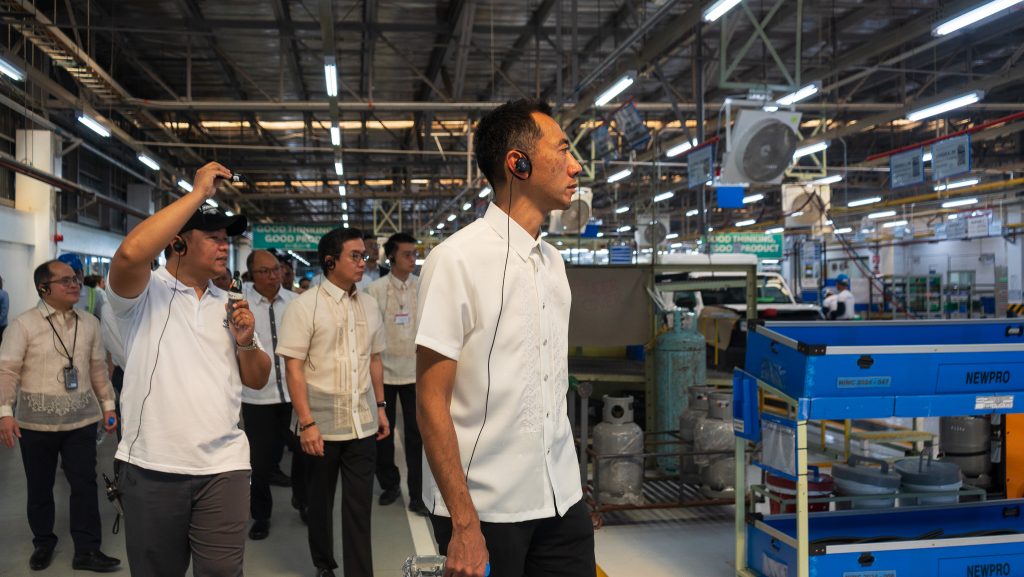Ahead of the much-awaited public launch of its storied and iconic workhorse nameplate Tamaraw draws near (this Friday, December 6, to be exact), Toyota Motor Philippines Corporation (TMP) last week opened the gates of its sprawling 78-hectare, Philippine Export Zone Authority (PEZA)-accredited Santa Rosa, Laguna facility to guests and select members of the media.

The occasion, fitting attended principally by TMP employees, was to formally introduce and unveil the many iterations of the aforementioned vehicle. The iconic, once-popular nameplate gets another run at embodying much of the company’s commercial/utility vehicle aspirations. Based on Toyota’s new International Multi-purpose Vehicle 0 (IMV 0) platform designed for the Asian market, the Tamaraw’s return is even more significant because it will be manufactured in Santa Rosa.
Addressing attendees, TMP Chairman Alfred V. Ty described the Tamaraw as a “super work vehicle” and “wonder vehicle.” He continued, “Just one year ago, we were honored by no other than President Marcos and Chairman Akio Toyoda to witness our CKD (completely knocked down) assembly lines, and today, we have all of you right here in Santa Rosa.”

Ty narrated that the Tamaraw, called an Asian utility vehicle when it was first introduced in December 1976, debuted in a high-side pickup form (with roof), motivated by a 1.2-liter 3K engine mated to a four-speed manual transmission. Its second generation rolled out in the next decade, then saw the updated high-side pickup in 1991, and the third-generation Tamaraw FX Wagon in 1993.
The Tamaraw – through its many iterations – is envisioned to provide “an inclusive mobility solution for micro, small, and medium enterprises (MSMEs) across various industries nationwide.

In a release, TMP maintained the Santa Rosa factory, which boasts a “capacity exceeding 54,800 units annually,” will now produce three CKD models: the Vios, Innova, and next-generation Tamaraw. “This expansion aims to bolster local capabilities and regional competitiveness, drive technology transfer, and sustain employment,” it added.
After the unveiling, TMP invited guests for a brief tour of its new 1.5-hectare, P1.1-billion TMP Conversion Factory – which ups the total investment in the IMV 0 project to a cool P5.5 billion, spent on “earlier investments in vehicle production, in-house and outsourced parts localizations.” The factory rolls out the Tamaraw in three body styles – dropside, utility van, and aluminum van forms – available in gas and diesel powertrains.
Present for the occasion was Toyota Asia Region Deputy Chief Executive Officer Hao Quoc Tien, who confirmed, according to TMP, that the conversion factory is a “capability breakthrough, being first of its kind in the Southeast Asian region.”
Meanwhile, speaking with reporters after the unveiling, Hashimoto explained, “This commercial vehicle area is very new to Toyota. After 2004, we stopped the commercial vehicle line (of the Tamaraw). This market is (now) dominated by Mitsubishi and Hyundai and we are quite behind. We are now the challenger.”
He reiterated, “We need to develop again the image of Toyota in this specific category. In passenger cars, we have no problem, we are very confident. But in this (utility vehicle space) is really a big challenge.”
The executive said he expects the “utility vehicle” guise of the Tamaraw, among its many iterations, to gain the most traction in the market. This used to be called the FX, and it was renamed, insisted Hashimoto, to “avoid confusion.” The confidence in the variant is predicated on its versatility. “It is our focus model.”
As for sales projections, the TMP president said he expects the nationwide Toyota dealership network to move some 1,500 to 1,800 units monthly. Pricing has been announced to be “below P800,000” for the dropside variant, with more specific price tags to be revealed during the Tamaraw’s public launch.
Replying to a question from this writer on what the Tamaraw’s arrival means for the brand’s equally versatile Lite Ace utility series, Hashimoto said, “We want to maximize our model lineup. The Lite Ace is one of those – covering a (market) area through its 1.5-liter gasoline engine. And we still have the Tamaraw, and we have Hi Ace Commuter. These several models will be mixed in this category.”

